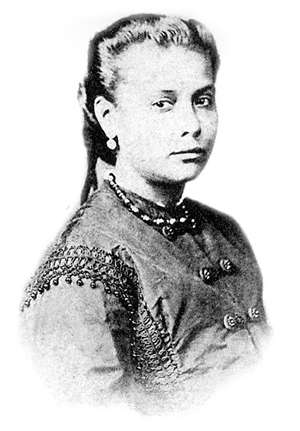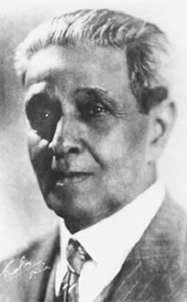Choro
| Choro | |
|---|---|
| Stylistic origins | |
| Cultural origins | Late 19th century, Rio de Janeiro, Brazil |


Choro (Portuguese pronunciation: [ˈʃoɾu], "cry" or "lament"), also popularly called chorinho ("little cry" or "little lament"), is an instrumental Brazilian popular music genre which originated in 19th century Rio de Janeiro. Despite its name, the music often has a fast and happy rhythm. It is characterized by virtuosity, improvisation and subtle modulations, and is full of syncopation and counterpoint. Choro is considered the first characteristically Brazilian genre of urban popular music. The serenaders who play choros are known as chorões.[1]
Choro instruments

Originally choro was played by a trio of flute, guitar and cavaquinho (a small chordophone with four strings). Other instruments commonly played in choro are the mandolin, clarinet, saxophone, trumpet and trombone. These melody instruments are backed by a rhythm section composed of 6-string guitar, 7-string guitar (playing bass lines) and light percussion, such as a pandeiro. The cavaquinho appears sometimes as a melody instrument, other times as part of the rhythm.
Compositional structure
Structurally, a choro composition usually has three parts, played in a rondo form: AABBACCA, with each section typically in a different key (usually the tonal sequence is: principal key->relative mode->sub-dominant key[2]). There are a variety of choros in both major and minor keys.
History
 |
O Urubu e o Gavião
Choro "O Urubu e o Gavião" (or "Urubu Malandro"), recorded in 1930 by Pixinguinha on the flute |
| Problems playing this file? See media help. | |
 |
Harmonia Selvagem
Choro "Harmonia Selvagem" composed by Dante Santoro. Recorded by Dante Santoro (flute) in 1938. |
| Problems playing this file? See media help. | |
 |
Amapá
Choro (maxixe/Brazilian tango) "Amapá" composed by Costa Júnior in 1901. Recorded by Dante Santoro (flute) in 1941. |
| Problems playing this file? See media help. | |
 |
Aguenta, seu Fulgêncio
Choro "Aguenta, seu Fulgêncio", composed by Lourenço Lamartine and played by Pixinguinha (flute) and Lourenço Lamartine. Recorded in 1929. |
| Problems playing this file? See media help. | |
 |
Sofres porque queres
Choro Sofres porque queres, recorded in 1919 by Pixinguinha on the flute |
| Problems playing this file? See media help. | |
 |
Escovado
"Escovado", composed (1905) and recorded (1930) by Ernesto_Nazareth (piano). |
| Problems playing this file? See media help. | |
 |
Mariana em Sarrilho
Polca-choro "Mariana em Sarrilho", composed by Irineu de Almeida, recorded in 1907 by Grupo do Novo Cordão |
| Problems playing this file? See media help. | |
 |
Tico Tico no Fubá
Choro "Tico Tico no Fubá". Composed by Zequinha de Abreu. Recorded in 1931 by Orquestra Colbaz. |
| Problems playing this file? See media help. | |
 |
Magoado
Choro "Magoado", composed and recorded (in 1930) by João Pernambuco (guitar). |
| Problems playing this file? See media help. | |
 |
Massada
Choro "Massada" composed by Lulu Cavaquinho, recorded in 1911 by Choro Carioca |
| Problems playing this file? See media help. | |
 |
Sultana
Polca-choro "Sultana", composed by Chiquinha Gonzaga, recorded in 1908 by the Grupo Chiquinha Gonzaga |
| Problems playing this file? See media help. | |
 |
Corta jaca
Choro (maxixe) "Corta jaca", composed by Chiquinha Gonzaga and executed by the Grupo Chiquinha Gonzaga. Recorded in 1910-1912. |
| Problems playing this file? See media help. | |
 |
Atraente
Choro (maxixe) "Atraente", composed by Chiquinha Gonzaga, recorded by Pixinguinha (saxophone) and Benedito Lacerda (flute). |
| Problems playing this file? See media help. | |
 |
1 x 0
Choro "1 x 0" (ou "Um a zero"), composed by Pixinguinha and Benedito Lacerda. Played by Pixinguinha (saxophone) and Benedito Lacerda (flute). |
| Problems playing this file? See media help. | |



In the 19th century, choro resulted from the style of playing several musical genres (polka, schottische, waltz, mazurka and habanera) by carioca musicians, who were already strongly influenced by African rhythms, principally the lundu and the batuque. The term “choro” was used informally at first to refer to the style of playing, or a particular instrumental ensemble, (e.g. in the 1870s flutist Joaquim Antônio da Silva Callado formed an ensemble called "Choro Carioca", with flute, two guitars and cavaquinho),[3][4] and later the term referred to the music genre of these ensembles. The accompanying music of the Maxixe (dance) (also called "tango brasileiro") was played by these choro ensembles. Various genres were incorporated as subgenres of choro such as "choro-polca", "choro-lundu" "choro-xote" (from schottische), "choro-mazurca", "choro-valsa" (waltz), "choro-maxixe", "samba-choro", "choro baião".[5]
Just like ragtime in the United States, tango in Argentina and habanera in Cuba, choro springs up as a result of influences of musical styles and rhythms coming from Europe and Africa.
In the beginning (by the 1880s to 1920s), the success of choro came from informal groups of friends (principally workers of postal/telegraphic service and railway[6]) which played in parties, pubs (botecos), streets, home balls (forrobodós), and also the large success of musical scores of Ernesto Nazareth, Chiquinha Gonzaga and others pianists, published by print houses.[4] By the 1910s, many of the first Brazilian phonograph records are choros.
Much of the mainstream success (by the 1930s to 1940s) of this style of music came from the early days of radio, when bands performed live on the air. By the 1950s and 1960s it was replaced by urban samba in radio, but was still alive in amateur circles called "rodas de choro" (choro gatherings in residences and botecos), the one most famous was the "roda de choro" in the house of Jacob do Bandolim, in Jacarepaguá, and the "roda de choro" in the pub "suvaco de cobra" in the Penha.
In the late 1970s there was a successful effort to revitalize the genre in the mainstream, through TV-sponsored nationwide festivals in 1977 and 1978, which attracted a new, younger generation of professional musicians. Thanks in great part to these efforts, choro music remains strong in Brazil. More recently, choro has attracted the attention of musicians in the United States, such as Mike Marshall and Maurita Murphy Mead, who have brought this kind of music to a new audience.
Most Brazilian classical composers recognize the sophistication of choro and its major importance in Brazilian instrumental music. Radamés Gnattali said it was the most sophisticated instrumental popular music in the world. Heitor Villa-Lobos defined choro as the true incarnation of Brazilian soul. Notably, both composers had some of their music inspired by choro, bringing it to the classical tradition.[7] The French composer Darius Milhaud was enchanted by choro when he lived in Brazil (in 1917) and he composed the ballet Le Boeuf sur le toit, in which he quotes close to 30 Brazilian tunes.[8]
According to Aquiles Rique Reis (a Brazilian singer), ”Choro is classical music played with bare feet and callus on the hands”[9]
Notable Brazilian choro musicians
| Wikimedia Commons has media related to Choro. |
- Abel Ferreira
- Alessandro Penezzi
- Alexandre Ribeira
- Alencar Sete Cordas
- Almir Cortes
- Altamiro Carrilho
- Armando Neves (Armandinho)
- Arnaldinho do Cavaco
- Benedito Lacerda
- Carlinhos 7 cordas
- Carlinhos Moura
- Chiquinha Gonzaga
- Chôro das 3
- Danilo Brito
- Dilermando Reis
- Dino 7 Cordas
- Ernesto Nazareth
- Fernando César
- Garoto
- Hamilton de Holanda
- Henrique Cazes
- Irineu de Almeida
- Israel Bueno de Almeida
- Izaias Bueno de Almeida
- Jacob do Bandolim
- João Pernambuco pt:João Pernambuco
- Luciana Rabello
- Luiz Otavio Braga
- Luizinho 7 Cordas
- Luperce Miranda
- Manoel Jacintho Coelho pt:Manoel Jacintho Coelho
- Marcelo Gonçalves
- Maurício Carrilho
- Milton Móri
- Nailor 'Proveta' Azevedo
- Oscar Castro Neves
- Paulo Bellinati
- Paulo Moura
- Paulo Sérgio dos Santos
- Pixinguinha
- Raphael Rabello
- Rogério Souza
- Ronaldo do Bandolim
- Silvério Pontes
- Waldir Azevedo
- Wilfried Berk
- Yamandu Costa
- Zé Barbeiro
- Zé da Velha
- Zé Paulo Becker
Notable choro compositions
- "Brejeiro" (Ernesto Nazareth)
- "Apanhei-te Cavaquinho" (Ernesto Nazareth)
- "Odeon" (Ernesto Nazareth)
- "Carinhoso" (Pixinguinha)
- "Lamentos" (Pixinguinha)
- "Segura Ele" (Pixinguinha)
- "Um a zero" (Pixinguinha)
- "Vou Vivendo" (Pixinguinha)
- "Brasileirinho" (Waldir Azevedo)
- "Pedacinhos do Céu" (Waldir Azevedo)
- "Dôce de Coco" (Jacob do Bandolim)
- "Noites Cariocas" (Jacob do Bandolim)
- "Tico-Tico no Fubá" (Zequinha de Abreu)
- "Meu caro amigo" (Chico Buarque e Francis Hime)
- "Meu amigo Radamés" (Antonio Carlos Jobim)
- "Choros nos. 1 to 14" (Heitor Villa-Lobos)
- "Choro no. 2" (Armando Neves)
See also
Suggested reading
- Livingston-Isenhour, T., and Garcia, T. G. C. (2005). Choro: A Social History of a Brazilian Popular Music. Bloomington, Indiana: Indiana University Press.
- Koidin, Julie (2011). Os Sorrisos do Choro: Uma Jornada Musical Através de Caminhos Cruzados. São Paulo: Global Choro Music.
- Koidin, Julie (2013). "Choro Conversations: Pursuing Life, Love and Brazil's Musical Identity," - Fremont, California: Global Choro Music.
- AMARAL JÚNIOR, José de Almeida (2013). "Chorando na Garoa - Memórias Musicais de São Paulo". São Paulo: Fundação Theatro Municipal de São Paulo.
Films
- 2005 - Brasileirinho: Grandes Encontros do Choro. Directed by Mika Kaurismäki.
- 2016 - "Mexicano: Carlito y La Choro Fábrica". Directed by Cristina Gonzalez.
External links
- Choro de Rua, Italy
- Regional de NY
- Chorolê - The Israeli Choro Ensemble
- Abdallah Harati, Brazilian 7 string guitar player
- Agenda do Samba & Choro
- Maria-Brazil - Brazilian Culture on the Web
- ChoroMusic.com Play Along Brazilian Choro
- Pe de Cana, choro trio band from Vancouver-Canada
- Choro das 3, three young sisters' group
- Brazil Essence - Majorca, Spain
- Casa de Choro - Toulouse, France
- Clube do Choro de Torino
- Dois no Choro, Julie Koidin flute and Paulinho Garcia guitar and vocals
- Chorinho e.V.
Notes
- ↑ Béhague, Gerard. "Choro". Grove Music Online. Oxford Music Online. Retrieved 22 September 2013. (subscription required)
- ↑ http://www.highbeam.com/doc/1G1-91658404.html
- ↑ What is Choro? Archived 2011-10-01 at the Wayback Machine.
- 1 2 Livingston-Isenhour, T., and Garcia, T. G. C. (2005). Choro: A Social History of a Brazilian Popular Music. Bloomington, Indiana: Indiana University Press.
- ↑ http://www.choromusic.com/arquivos/choro_english.pdf pag 4
- ↑ Alexandre Gonçalves Pinto (1936). O choro - Reminiscências dos chorões antigos.
- ↑ http://www.brazzil.com/musfeb96.htm
- ↑ http://daniellathompson.com/Texts/Le_Boeuf/boeuf_chronicles.htm
- ↑ http://www.brazilianvoice.com/mostracolunas.php?colunista=Aquiles%20Reis&id=772